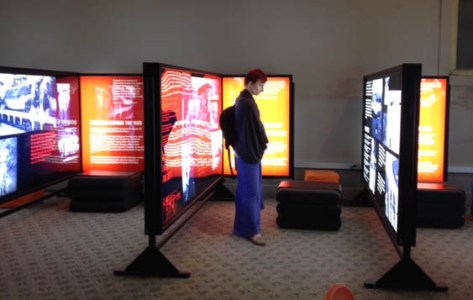
Members of JANM’s Board of Trustees, Board of Governors, and staff traveled to New York City for a weekend-long offsite meeting of the Board of Trustees at the end of October. It was a welcome opportunity to escape the hot temperatures in Los Angeles for the cool autumn weather in New York. Most of the weekend was devoted to taking care of business, but time was also set aside for relaxing, networking, and catching up.
The social highlight was the Saturday afternoon reception, held at the Nippon Club in Midtown. In addition to JANM board members, distinguished guests included Yosuke Honjo, CEO and President, Ito En (North America); Masahide Enoki, Vice President, Ito En; Sugu Mike, Executive Chairman, MUFG Union Bank; Yumi Higashi, Vice President of Corporate Communications, MUFG Union Bank; and Osamu Honda, Director General of the Japan Foundation, New York. Delicious food and beverages were enjoyed by all.

At the reception, JANM announced a major gift from the estate of artist Henry Sugimoto, generously made by his daughter Madeleine. The artworks and artifacts span Sugimoto’s entire career and include 240 oil paintings and more than 200 watercolors. This acquisition makes the Sugimoto Collection, which comprises over 700 works of art, the largest collection of paintings at JANM.
Maggie Wetherbee, JANM Collections Manager, made a special trip to New York to bring one of her favorite Sugimoto pieces to the reception for guests to see. It is a carved wood plate created by the artist in the 1980s; it depicts Madeleine Sugimoto at age six, sitting in front of the mess hall at “Jerome Camp” in Arkansas, where the Sugimoto family was incarcerated, in 1943. The tags attached to her and the pieces of luggage surrounding her bore their family number, so that they could be returned to their assigned barrack if they were separated from her parents. Attendees were very excited and appreciative to see this piece up close, and were able to ask Wetherbee additional questions about the collection.
Dr. Greg Kimura, JANM’s President and CEO, gave a short presentation on the latest happenings at the museum, including exhibitions, educational tours, and new technology. Representative Mark Takano of the 41st Congressional District, a longtime supporter of the museum, spoke about what JANM means to him. He mentioned that Riverside City College, which is part of his district, holds a major collection of works by artist Mine Okubo; JANM also has a significant number of works by Okubo in its permanent collection. Rep. Takano also promised to assist JANM in bringing its recent exhibition, Before They Were Heroes: Sus Ito’s World War II Images, to a prominent venue in Washington, D.C.

In addition to the meetings and reception, some board members and their family and friends elected to visit the National September 11 Memorial and Museum, located on the former site of the World Trade Center. The group was given a guided tour by the museum’s founding President and CEO, Joseph C. Daniels, and Vice President for Education and Public Programs Clifford Chanin. In addition to being a deeply moving experience, the intimate tour was an opportunity to build a partnership with an institution with which JANM shares a common mission of commemorating a national tragedy and promoting the messages of hope, transcendence, and tolerance that come out of it.
Another highlight of our trip was enjoying some delicious meals at Hasaki and Sakagura, two restaurants owned by Bon Yagi and his daughter Sakura Yagi, who are longtime friends of the museum. We highly recommend visiting either or both of these establishments the next time you are in New York.













